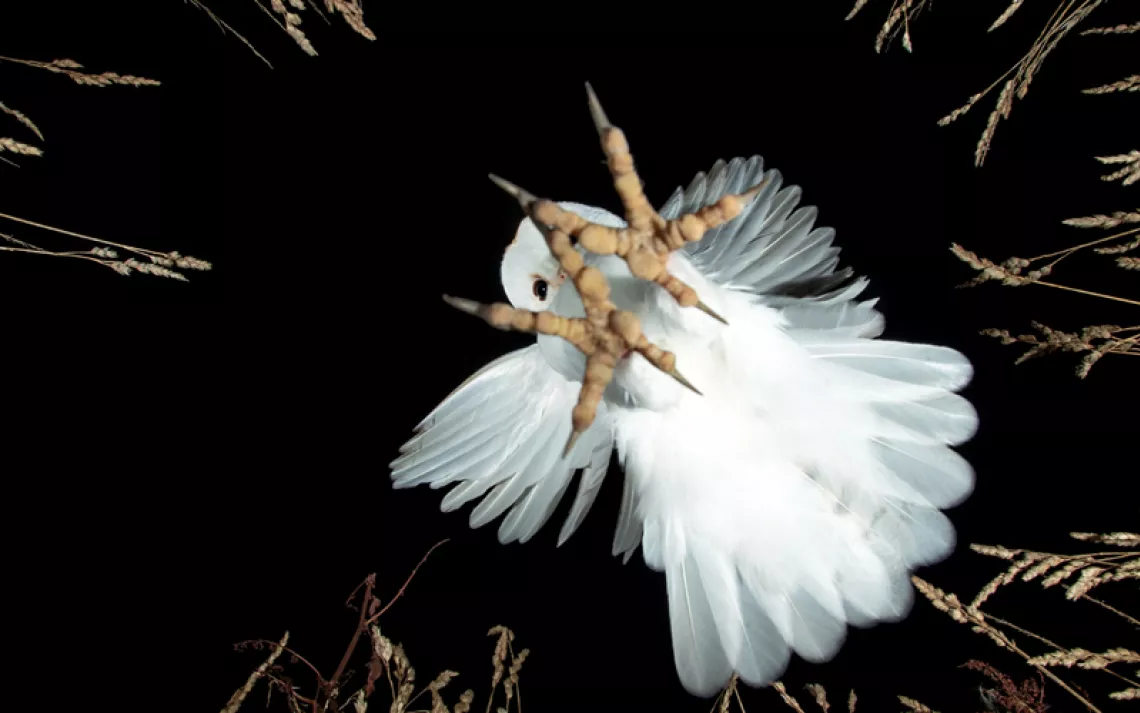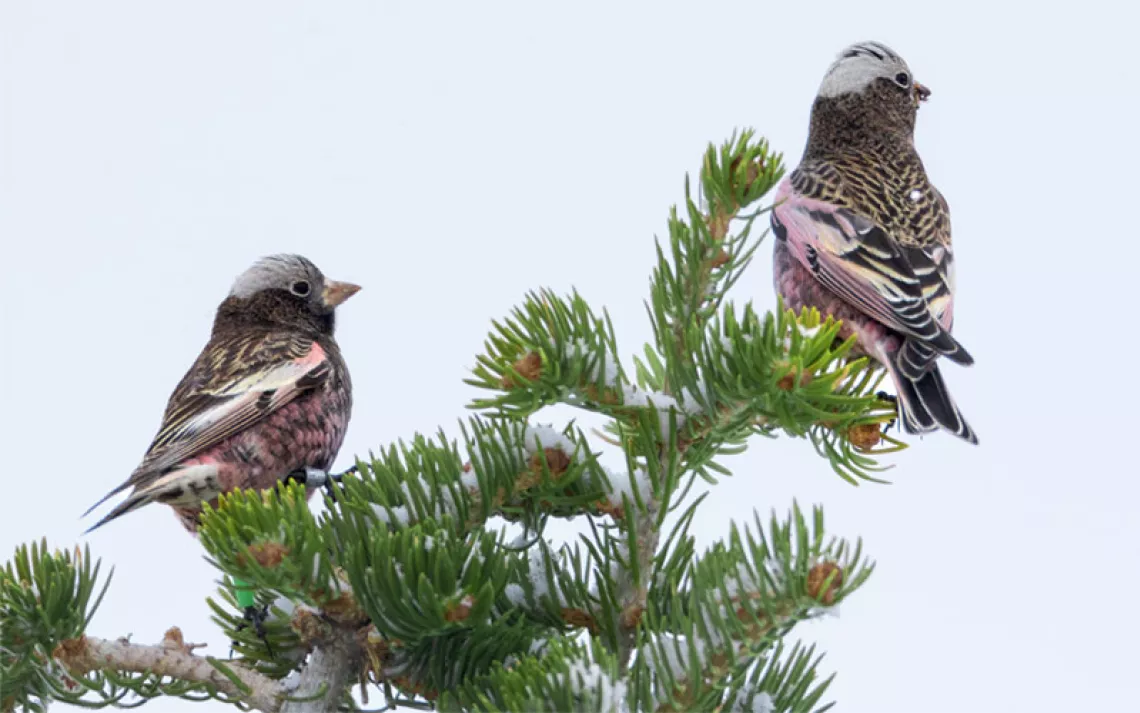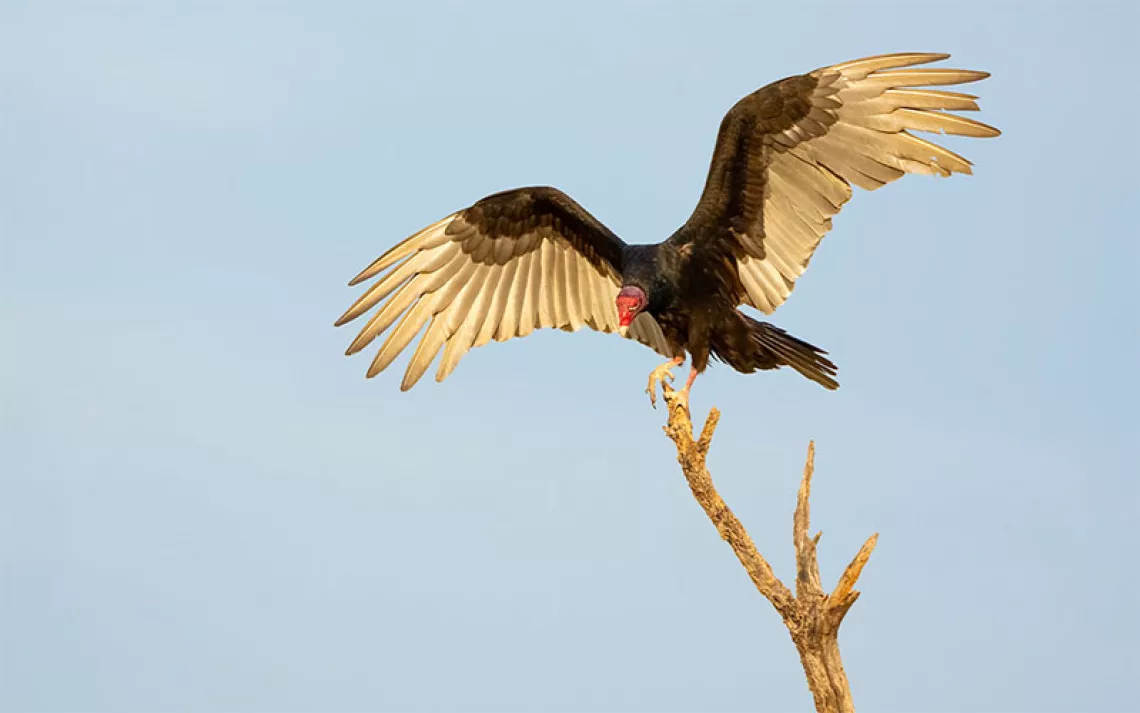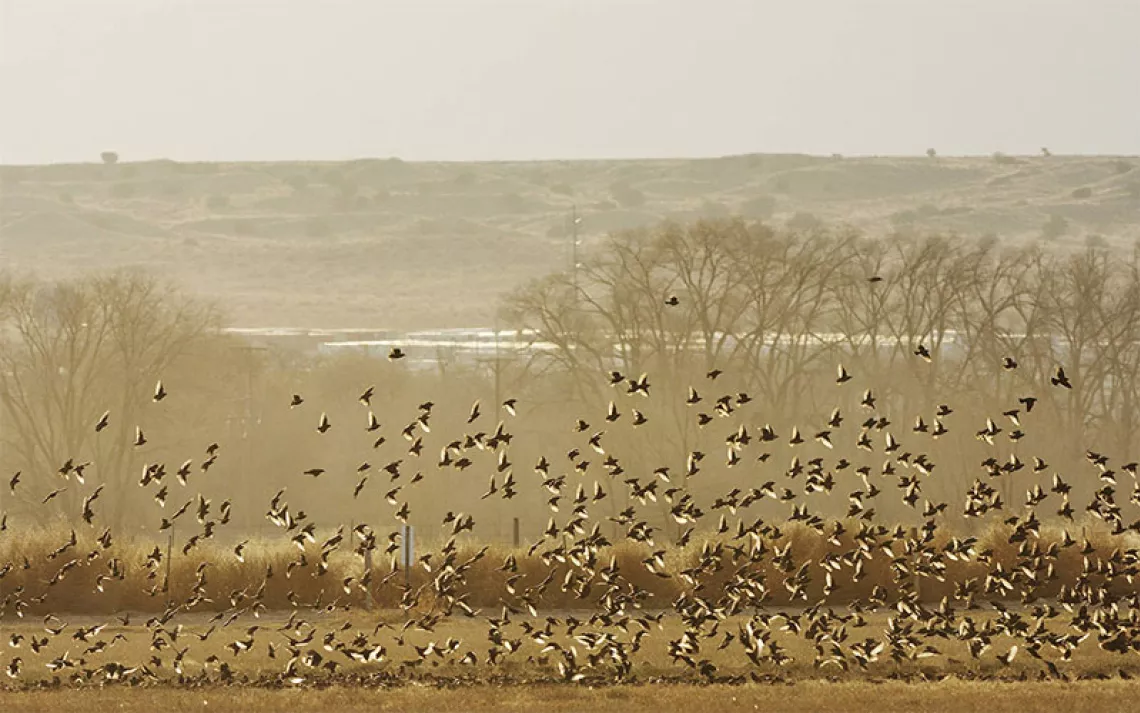Dispatches From the Great Plains’ Sandhill Crane Migration
This year’s stunning show marks the 100th anniversary of the Migratory Bird Act
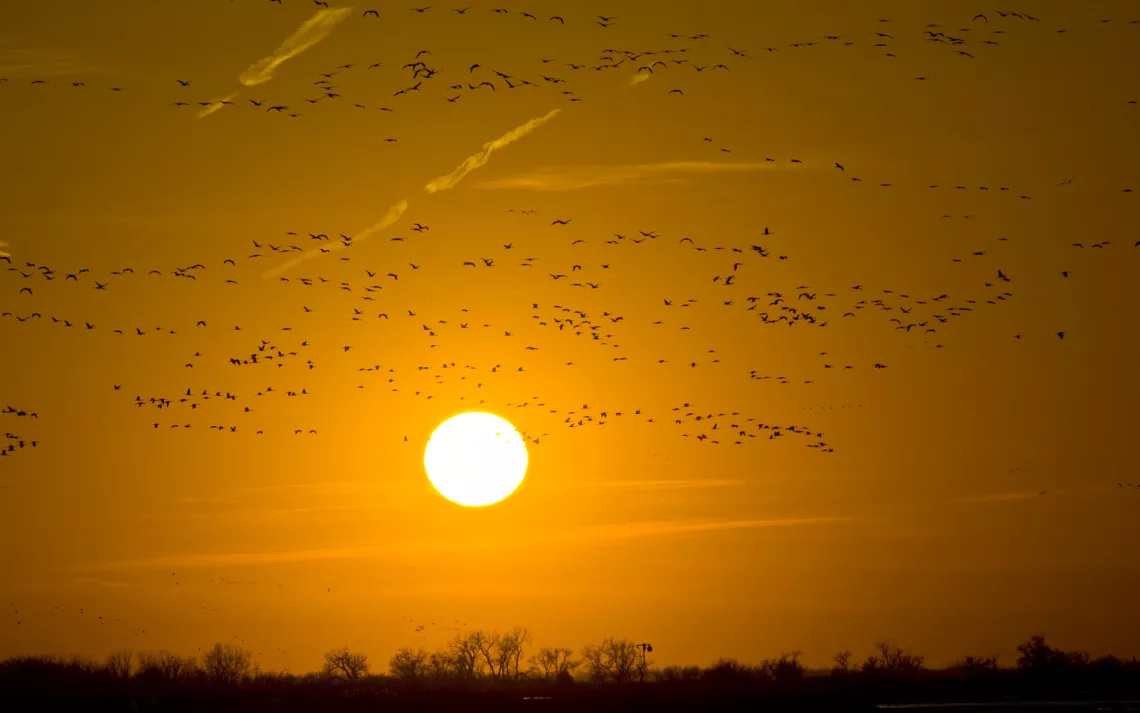
Photos courtesy of Visit Nebraska Tourism
There are no cloud-skimming skyscrapers obscuring Nebraska’s expansive sky. Nor do forests or tree lines blur its horizon. Here, farm and ranch land stretch for miles, creating a stage along the horizon line featuring vibrant sunrises and sunsets and thunderstorms that dance across the plains. The view is unstoppable, immense. What better screen than this vast blue yonder to witness one of the world’s greatest migration spectacles?
For six weeks each spring, 500,000 to 600,000 sandhill cranes, which stand four to five feet tall with a wingspan reaching up to six feet, migrate up from their southern wintering grounds in Mexico, Texas, and New Mexico, and pass through North America’s Central Flyway path. Each year they stop along south-central Nebraska’s Rainwater Basin, situated along the Platte River Valley, to rest and refuel before continuing their journey northward, to their summertime nesting grounds in Canada, Alaska, and Siberia. What’s astounding is that sandhill cranes have been taking this same path for millennia. You might even call them living dinosaurs—scientists have discovered fossils of sandhill crane wing bones in Nebraska that date back 9 million years.
2018 marks the 100th Anniversary of the Migratory Bird Act, which, along with other legal protections, is credited with saving from extinction Nebraska’s marquee attraction, the sandhill crane, as well as the wood duck, snowy egret, and many other species that rely on the Central Flyway path. The Iain Nicolson Audubon Center at Rowe Sanctuary in Gibbon, Nebraska, is committed to improving and expanding the birds’ essential habitat along the nearby Platte River, so as to ensure the preservation of this key flyway stopover point.
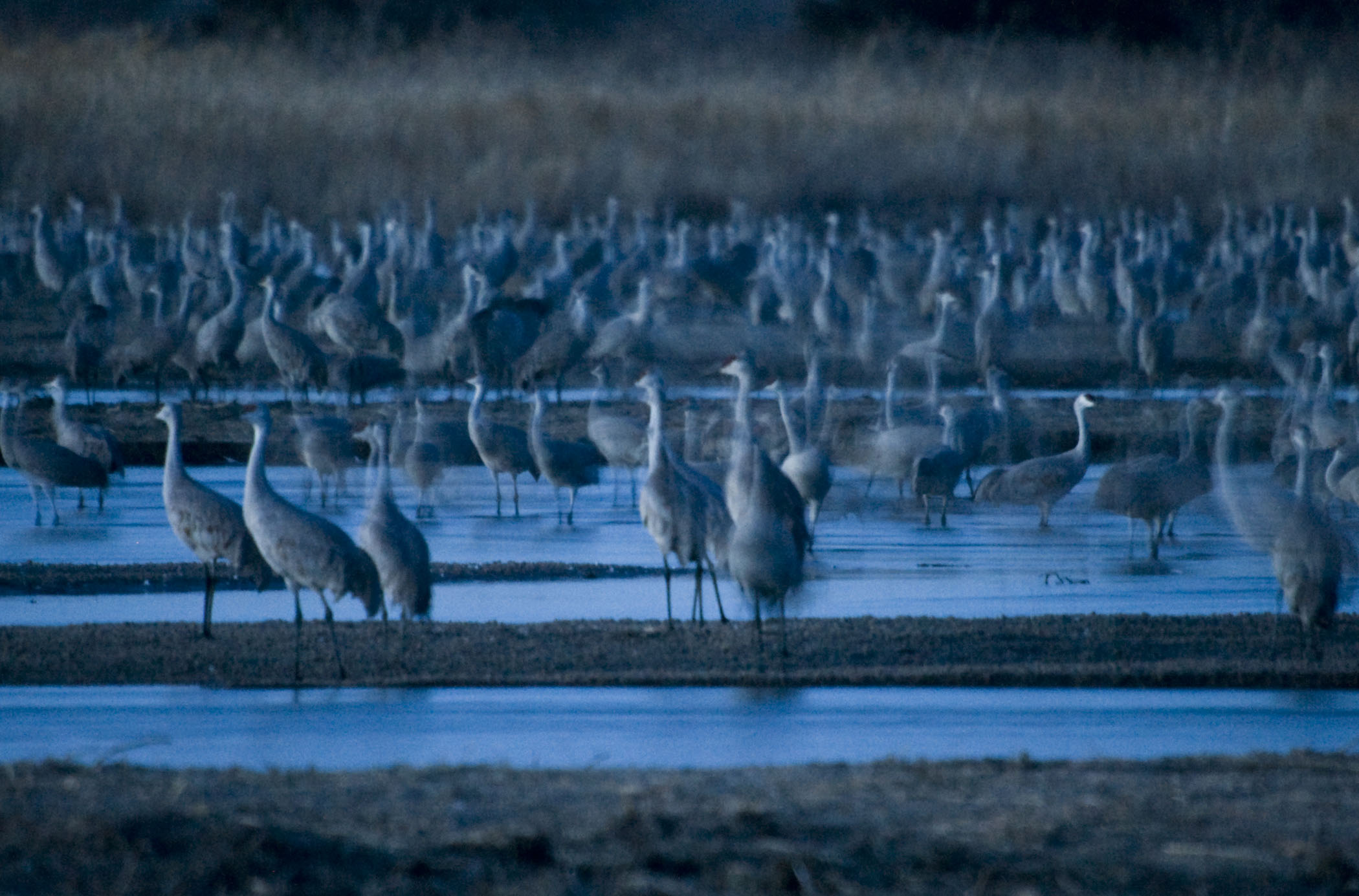 The sanctuary’s busiest visitor season runs from late February through April, when the giant birds faithfully alight along the Great Plains’ braided river channels, offering prime viewing opportunities for birders and curious wildlife enthusiasts. After all, it’s not every day that you get to see 80 percent of the world’s sandhill crane population gathered in one place. In fact, the affair could be described as one big family reunion—the cranes migrate in individual family groups and, once they gather on the Platte, socialize among the many other flocks present.
The sanctuary’s busiest visitor season runs from late February through April, when the giant birds faithfully alight along the Great Plains’ braided river channels, offering prime viewing opportunities for birders and curious wildlife enthusiasts. After all, it’s not every day that you get to see 80 percent of the world’s sandhill crane population gathered in one place. In fact, the affair could be described as one big family reunion—the cranes migrate in individual family groups and, once they gather on the Platte, socialize among the many other flocks present.
During the day, hungry cranes dot the heartland fields, eating their fill of waste corn, grains, insects, and worms—it’s not unusual to see as many as 100,000 birds populating a single meadow. A drive along south-central Nebraska’s country back roads rewards onlookers with up-close glimpses of the cranes’ crimson-red crowns, bobbing up and down as they peck away at the ground with their long bills, foraging for grub. After three to four weeks’ time spent fueling up on this farmland buffet, the fortified birds fly out in groups, onward toward their next seasonal staging area.
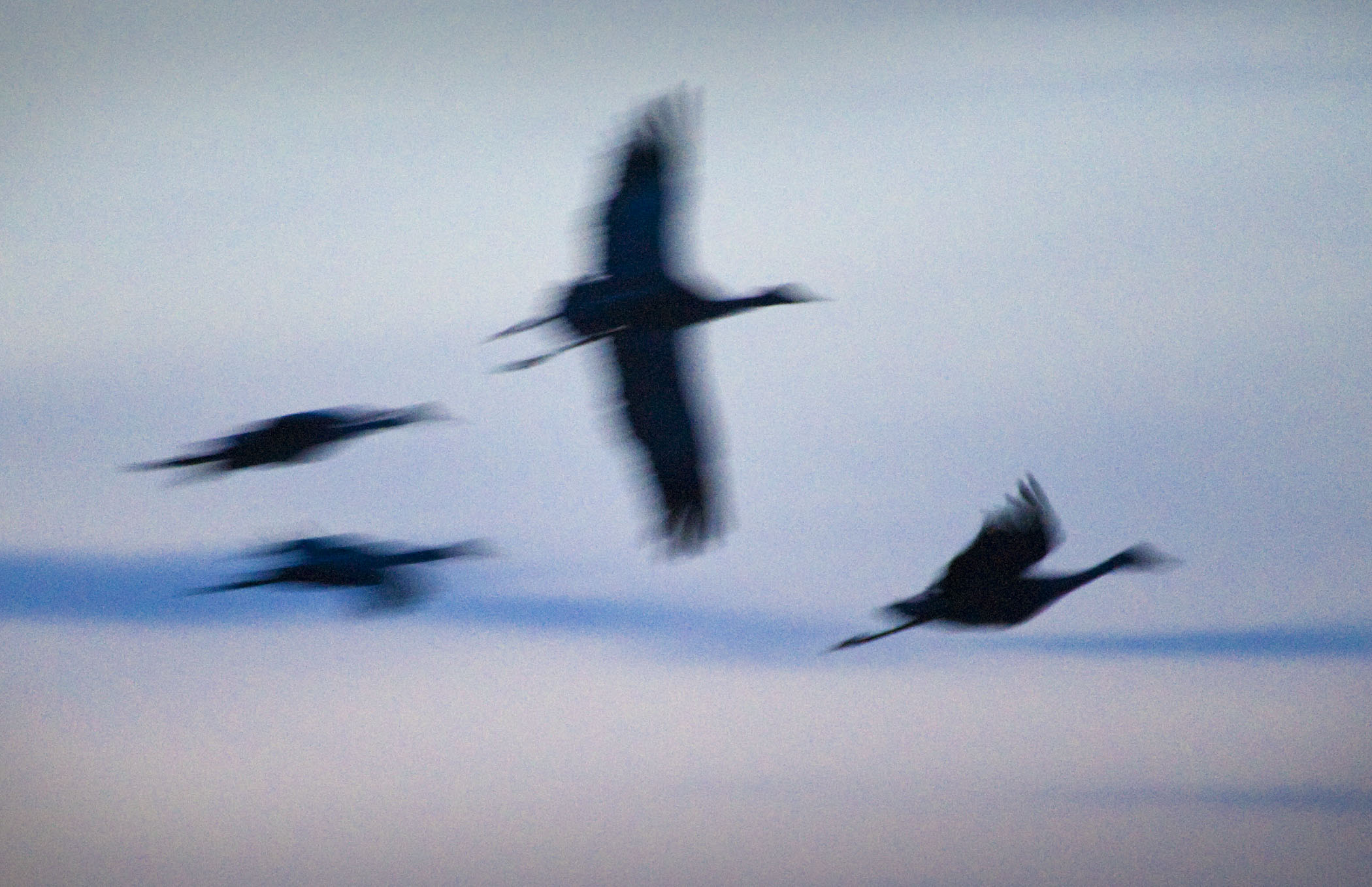 Sunrise and sunset are the best times to see the cranes soaring en masse—the birds depart at daybreak to feed in nearby fields and meadows, and at dusk return to their wetland refuges. The Platte’s wide-braided, muddy channels, surrounded by tall grass meadows, make for ideal roosting zones. These long, secluded stretches of sandbars allow the cranes to see predators—like hawks, eagles, foxes, and coyotes—as they approach.
Sunrise and sunset are the best times to see the cranes soaring en masse—the birds depart at daybreak to feed in nearby fields and meadows, and at dusk return to their wetland refuges. The Platte’s wide-braided, muddy channels, surrounded by tall grass meadows, make for ideal roosting zones. These long, secluded stretches of sandbars allow the cranes to see predators—like hawks, eagles, foxes, and coyotes—as they approach.
Right before dusk one evening last year, I joined a group of hopeful birdwatchers and curious tourists on a walk from the Rowe Sanctuary. We stepped out onto a trail through a restored tallgrass prairie, setting out for the sanctuary’s blind, to covertly view the incoming squadrons of cranes coming in to roost. The grass reached my head, and our guide said the tips would soon reach six feet.
Our guide lived near the cranes’ nesting sites in Alaska, but trekked out to Nebraska each spring, she explained, to volunteer at the Rowe Sanctuary and catch a glimpse of her neighbors before following their route back home. “Let’s stop here for a moment,” she said as we clustered at a fork in the trail leading to the blind. “Look around and think about the pioneers. Can you imagine seeing these tallgrass prairies and masses of strange birds for the first time?” We continued on quietly, looking around as the colors of sunset started to take hold on the endless canvas of sky. Entering the blind one by one, we lined up against the windows and peered out into the softening light. Wispy dark waving formations began to appear in the distance.
World-renowned conservationist and naturalist Dr. Jane Goodall has described the lines of cranes flying into the Platte River Valley as “whiffs of smoke,” because from far away, they appear hazy. In fact, Dr. Goodall, who returns to Nebraska each March to witness the cranes, has referred to this migration as one of the most amazing spectacles to see in North America. Thanks to a habitat that has not significantly changed in several millennia, the sandhill cranes, as well as other birds, continue to thrive along this flyway and perform one of nature’s grandest shows.
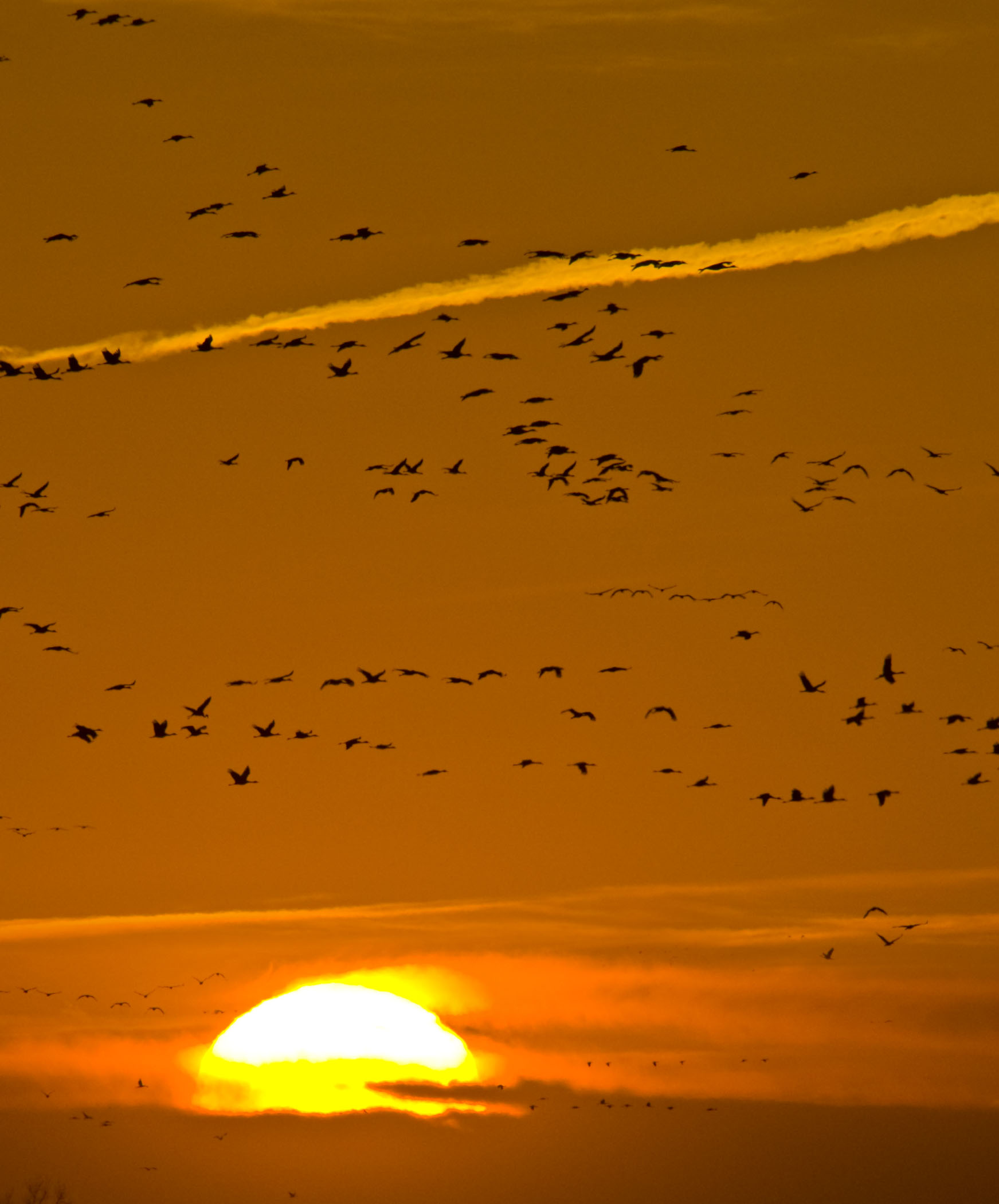 It all happens quickly, like a sunset switch has been flipped. As the sky started to fill with formations of cranes that evening I stood in the blind, we could hear distant cries and screeches. Against the fast-changing hues of pink, mauve, and orange, the dark whiffs of smoke grew larger and the noise more cacophonous. It was a marvel to behold—line after line of black waves, one above the next, filling a lavender sky as if lines in a composition book. Endless squadrons of 20 to 25 birds flew over the river sandbars in search of landing spots, the cranes hovering and casting about until suddenly, they dropped, like deflated balloons, onto their perfect perches.
It all happens quickly, like a sunset switch has been flipped. As the sky started to fill with formations of cranes that evening I stood in the blind, we could hear distant cries and screeches. Against the fast-changing hues of pink, mauve, and orange, the dark whiffs of smoke grew larger and the noise more cacophonous. It was a marvel to behold—line after line of black waves, one above the next, filling a lavender sky as if lines in a composition book. Endless squadrons of 20 to 25 birds flew over the river sandbars in search of landing spots, the cranes hovering and casting about until suddenly, they dropped, like deflated balloons, onto their perfect perches.
Within minutes, as sunset came to a close, thousands of sandhill cranes nestled into their wetland refuge for the night. The image burned into my memory. Standing on the shallow sandbars, the sandhill cranes’ feathery silhouettes formed a painterly pose, darkening against a fading horizon of flaming orange.
***
*Nebraska offers two unique conservation and wildlife centers where visitors can partake in crane-watching tours and attend seminars and special events:
- The Crane Trust Nature and Visitor Center in Wood River
For additional sandhill crane viewing sites in Nebraska, go to VisitNebraska.com.
Not able to make it to Nebraska this spring? Here are some other prime sandhill crane migration viewing areas and festivals:
Monte Vista Sandhill Crane Festival in Monte Vista, Colorado
March 9–11
In partnership with the Friends of the San Luis Valley National Wildlife Refuge, the city of Monte Vista hosts an annual festival heralding the return of the sandhill cranes to the valley, surrounded by Colorado mountain vistas. Visitors can take part in tours, photography workshops, and more.
Othello Sandhill Crane Festival in Othello, Washington
March 24–26
This festival celebrates the annual return of the sandhill cranes to the Channeled Scablands of eastern Washington with a three-day community event featuring wildlife tours, including a field trip to the Columbia National Wildlife Refuge, lectures, an art contest, and children’s activities.
Northern California: Sacramento–San Joaquin Delta
Wetland and wildlands all along this corridor of Northern California offer prime opportunities to view migrating sandhill cranes and other birds from November through March as they soar along the Pacific Flyway.
Annual Lodi Crane Festival in Lodi, California
The 22nd festival takes place November 2–4.
The Cosumnes River Preserve in Galt, California, is another important Pacific Flyway stopover point for migrating birds located in the central valley of the San Joaquin area. The fertile flood plains make for one of the best areas to birdwatch.
California’s nearby Woodbridge Ecological Preserve offers crane tours in January, February, and March.
 The Magazine of The Sierra Club
The Magazine of The Sierra Club
